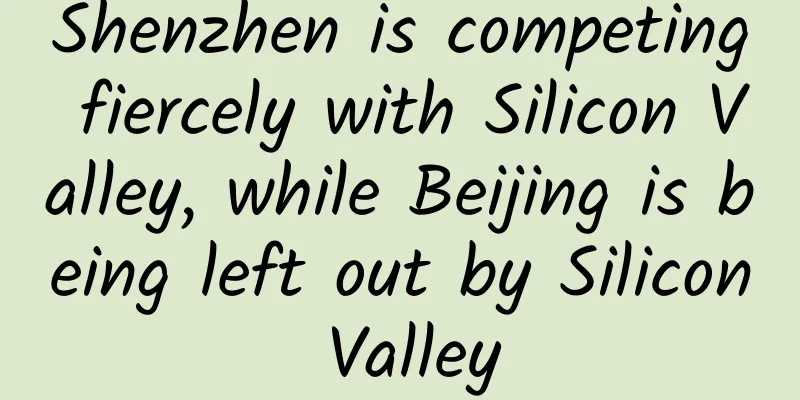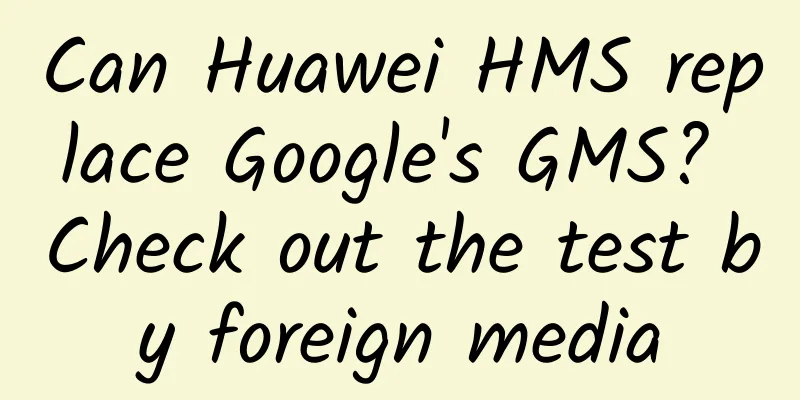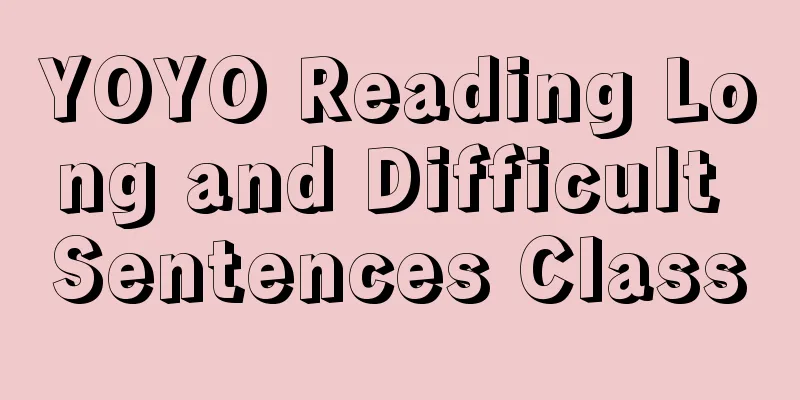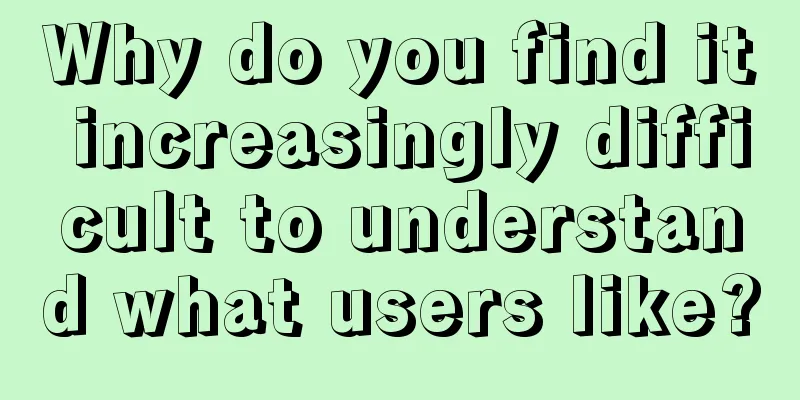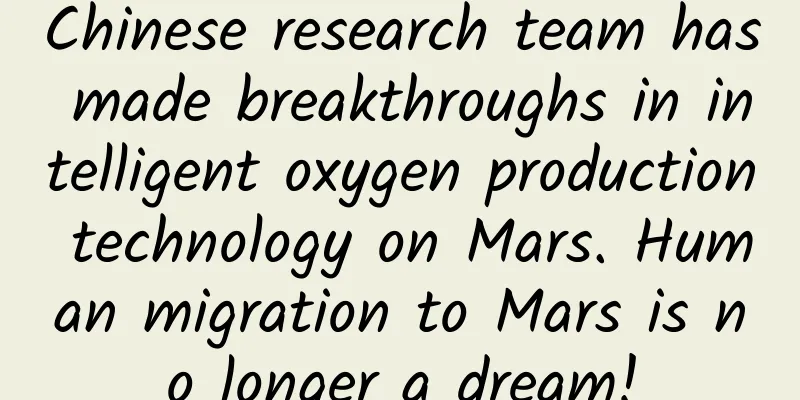He lost his teaching position because of "not doing his job properly", but he became a master
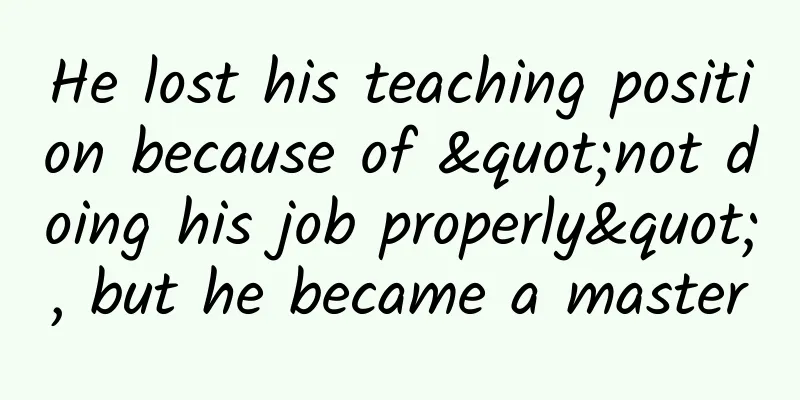
|
Isaac Asimov showed outstanding creative talent since he was a child, but he encountered many setbacks in his university studies and academic career. After finally obtaining a tenured position as an associate professor, he devoted a lot of energy to amateur writing and reduced his chemistry research, which caused dissatisfaction in the school and led to his dismissal. This forced him to focus on science fiction and popular science creation, and he brought his talent in knowledge dissemination and scientific speeches to the extreme, which eventually led to his legendary career as a science writer. Written by Xue Bin (Shanghai Ocean University) Isaac Asimov (1920-1992), a Russian-American Jew, was a science fiction writer, popular science writer, and literary critic. He was one of the representatives of the "Golden Age" of science fiction from the 1940s to the 1960s. Asimov was a prolific writer, who wrote and edited nearly 500 books in his lifetime, publishing an average of more than 10 books a year. In addition, he also published a large number of essays and reviews in newspapers and magazines, covering a wide range of topics including natural sciences, social sciences, literature and art. He, along with American science fiction writer Robert A. Heinlein (1907-1988) and British science fiction writer Arthur C. Clarke (1917-2008), are known as the three giants of world science fiction. In 1960, Asimov (right) and Clarke (left) took a photo together Asimov's representative science fiction works include the seven-part Foundation trilogy, the five-part Robert trilogy, and the Empire trilogy. He has won the Hugo Award, the highest award in the science fiction field, from the World Science Fiction Association seven times, the Nebula Award from the Science Fiction Writers of America twice, and the Nebula Award for Lifetime Achievement - Grand Master Award in 1987[1]. In 2019, the International Astronomical Union named asteroid 5020 Asimov after him[2]. Asimov's popular science works were popular all over the world in the second half of the 20th century. Among them, Asimov's Guide to Science was first introduced to my country by Science Press in the mid-to-late 1970s. It was divided into four volumes, namely, The Universe, Earth and Atmosphere, From Elements to Elementary Particles, The Origin of Life, and The Human Body and Mind. It was published successively under the title of "Basic Knowledge of Natural Sciences" and had a great impact. The second volume of the eighth-grade Chinese textbook compiled by the Ministry of Education also included "Two Short Essays by Asimov" (namely, "Dinosaurs Are Everywhere" and "Squashed Sand"). A helpless choice Asimov was well-informed and well-read, and was known as a "child prodigy" at a very young age. His parents immigrated to the United States with their family when he was 3 years old, living at the bottom of society and making a living by running a candy store. Naturally, Asimov's parents had high hopes for him, hoping that he could enter a higher education institution for further studies and engage in a respectable career such as a doctor or lawyer in the future, thus completely changing the fate of him and his family. Obviously, Asimov had this ability, but he encountered trouble when he entered college in 1935. At that time, he applied to Columbia College, the undergraduate school of Columbia University, the best university in New York City where his family lived, in order to be able to go home often to take on family responsibilities, and of course because he was confident in his own abilities. However, the interviewer rejected him because he was under 16 years old, and suggested that he enroll in Seth Lo College, a lesser undergraduate college at Columbia University, but with the advantage that he could study with Columbia College students in his junior and senior years. Asimov attributed all this to anti-Semitism, because at that time, there were very few places for Jews in prestigious schools like Columbia College. In desperation, Asimov was ready to give in. However, his father objected, praying that his son, who had shown extraordinary intelligence, could attend the best school. In this case, Asimov had no choice but to choose City College in New York, a university with a lower level but free, and it was open to Jews. However, things soon took a turn for the worse. Seth Lowe College sent Asimov an acceptance letter and promised to provide a scholarship. So he gave up City College and enrolled in Seth Lowe College. In his early college years, Asimov continued his fascination with history and once aspired to become a professional historian. But when he calmed down and thought about it, he couldn't ignore the reality of his livelihood. So he decided to become a scientist, so that he would have the opportunity to work in an industrial enterprise or an important research institution and could make a lot of money. [3] Cover of "The Stage of Life: Isaac Asimov's Autobiography" However, the zoology major he chose to prepare for medical school later proved to be one of Asimov's "bigger mistakes": he was terrified of the cruelty and bloodiness of animal dissection and could never face the relevant courses. In this way, he spent his freshman year in embarrassment. Soon after, Seth Low College was closed. Starting from his sophomore year, Asimov moved to another campus to continue his studies, and at the same time he had the opportunity to change his major. Between physics and chemistry, he finally chose chemistry. The reason was that physics was more mathematical, and he felt that it was not what he was good at, while chemistry was not. Although he did not like it very much, it would make it easier for him to apply for medical school in the next step. Therefore, chemistry became Asimov's new major. However, this genius with a high IQ was not very good at hands-on work. As he commented in his later years: "I was hopeless in the laboratory. I was not suitable for doing experiments at all. When doing experiments, I was clumsier and less professional than anyone else in the class." [4] Another setback Along with the creation of short science fiction novels, Asimov completed his university studies and eventually obtained a Bachelor of Science degree. In the days that followed, he could follow the established route to medical school. However, setbacks occurred again. All five medical schools in the New York area that he applied to rejected him. Asimov, who loves his home, did not plan to continue his studies in other places, even if there was a medical school that would accept him. At the same time, he began to doubt whether he was suitable for studying medicine. After all, as a doctor, he could not avoid dealing with diseases, wounds and blood.
So Asimov turned to apply to graduate school to pursue a degree in chemistry. But difficulties still existed: the courses he took in undergraduate studies were to prepare for applying to medical school, and he did not take enough chemistry classes. Without taking the physical chemistry course, he could not apply to pursue a degree in chemistry in graduate school. But the dean of Columbia University's chemistry department was not "interested" in Asimov, and even disliked him, probably because of the common problem of geniuses - being unruly. In order to persuade Asimov to quit, the dean set up several difficulties: he had to make up the credits of physical chemistry, and take a series of related courses, and his grades had to be above B, otherwise he would not get any credits at all - the result was tantamount to a waste of time and tuition fees. Asimov had no choice but to take up the challenge tenaciously. He took Professor Louis P. Hammett's physical chemistry course and became one of only three students who got an A in that large class. After only half a year, he was transferred from a probationary student to a formal graduate student. The 20-year-old genius demonstrated his strong learning ability and won the sympathy of others in the department. He called it his "last academic victory." I say "finally" because starting from his second year of graduate school, Asimov realized that academic achievement was more important than grades and test scores, and that he was not suitable to be a chemistry specialist because he had the qualities of a generalist and had some knowledge of almost everything. He felt that the truly valuable thing he did in school and the library was to lay a foundation of knowledge and understanding in many fields. "The chemistry graduate students around me were all better than me in chemistry. But most of them were actually almost illiterate in many areas, while I was very familiar with these areas." [5] Under the circumstances at the time, Asimov did not pass the examination to continue to pursue a doctorate, and only graduated with a master's degree. However, under the pressure of unemployment after graduation in the war-torn environment, he had to make other plans and strive for a second chance to take the exam. Fortunately, he passed this time! In February 1942, Asimov finally obtained the qualification to continue to pursue a doctorate and found a teacher willing to guide him. However, more than two months before that, the Pacific War broke out, and he had to interrupt his upcoming doctoral studies and work in the chemical laboratory of the U.S. Naval Air Force Experiment Station. The 'Shotgun Curve' Is No Joke After a four-year break from study, Asimov returned to Columbia University's Department of Chemistry to pursue a doctorate. This was a reunion with his research mentor, Charlie R. Dawson, who had accepted him. Professor Dawson was very fond of Asimov, who was a maverick and not well-liked by the professors. He thought he was a very interesting and thoughtful person, and even praised him to other professors. He was also very patient in guiding him in his studies. During this time, an interesting incident occurred. Asimov's mentor, Professor Dawson When Asimov began to learn experimental techniques, one of his tasks was to make a series of observations under varying conditions and then plot the results on a graph. In theory, these values should fall on a smooth curve, but Asimov's result was not like that: the values on the graph were very scattered, as if they were shot from a shotgun and scattered on it. Asimov jokingly called it the "shotgun curve" and submitted it without any "modification". When Asimov returned to the laboratory four years later, he found that Professor Dawson still had his "shotgun curve" and showed it to others. He shamefacedly begged the professor not to make fun of him, but the professor said seriously: "I'm not kidding you, Isaac, I'm praising your honesty." [6] This incident had a great impact on Asimov. In his autobiography in his old age, he wrote about Professor Dawson: "He lived to see what kind of person I became, and he had the book I presented to him, and I expressed my praise for him in many places. ... In fact, he told me - with a bit of emotional exaggeration, in the end it turned out that his greatest honor was that I had been his student. I couldn't believe this, but how I wished it was true. I really couldn't think of any better way to repay him for everything he had done for me." Moreover, during his doctoral student period, Asimov was mainly engaged in research related to enzyme catalytic dynamics. When doing experiments, he made the mistake of using a 0.2 ml pipette as a 2 ml one, and thus could not get the correct results for a long time; when writing papers, he was embarrassed when his supervisor pointed out that the corresponding full name should be given when using abbreviations for the first time; when preparing for graduation thesis, he found that this was a "super" project, and it took at least half an hour to print one page of text, not including drawings, which was much slower than his science fiction writing speed. What's more, at the request of his supervisor, he had to reprint a full 6 pages of paper on a typewriter in order to correct a small mistake; when the defense time finally came, the uneasy mood made him, who had always been confident, answer the wrong question... Seeing these "complaints" of Asimov, I believe that all those who have studied for a doctorate will smile knowingly. While still a doctoral student, he often had to complete academic reports such as work progress reports and literature reviews. At this time, Asimov fully demonstrated his talent for scientific presentations. His academic reports, which were "as clear as a mountain spring," were not only understandable to all the audience, but also not boring. This made his mentor very satisfied and gave him greater confidence [7]. Hard work pays off. On May 20, 1948, Asimov's doctoral dissertation entitled "The Kinetics of the Reaction Inactivation of Tyrosinase During Its Catalysis of the Aerobic Oxidation of Catechol" was approved, and he was subsequently awarded a Doctor of Philosophy (PhD) degree. The relevant research work was published in the authoritative Journal of the American Chemical Society (J. Am. Chem. Soc., 1950, 72, 820–828) in 1950. Asimov attended the doctorate ceremony with his family, but he refused to go on stage to receive the degree and just sat and watched, even though his father wanted to see his son's highlight moment on stage. Asimov wrote in his diary on the day he received his doctorate in 1948 Asimov, who had obtained his doctorate, was still troubled by the problem of finding a job. Fortunately, he could continue to do research as a postdoctoral fellow at school, which was a temporary safe haven. His postdoctoral research topic was to develop antimalarial drugs that could replace quinine, but he soon found that it was difficult to apply for research funding, which undoubtedly brought him a sense of crisis. At the same time, he continued to seek job opportunities in pharmaceutical companies, but frustration was still waiting for him. Fortunately, when he explained his postdoctoral research to a neighbor who knew nothing about anti-malarial drugs, he received very good reviews, which triggered his inspiration to write non-fiction works. It was this coincidence that opened another door for Asimov to engage in popular science writing. In the final stage of his postdoctoral work, Asimov published his first science fiction novel, "Little Pebbles in the Sky". At this time, his scientific research work also took a turn for the better, thanks to the recommendation of one of his loyal readers. The reader was William C. Boyd, a professor of immunochemistry at Boston University School of Medicine. After reading Asimov's famous science fiction work "Dusk", he was deeply moved and wrote a letter to Asimov to express his respect. From then on, the two became good friends. Just when Asimov was worried about his future after the end of his postdoctoral work, Professor Boyd helped him. Asimov was recommended to work in the Department of Biochemistry at Boston University School of Medicine. Although it was not a formal teaching position, equivalent to the current project employee, he had the opportunity to stay and become a formal employee. After several struggles, Asimov accepted the new job and began his career as a chemistry teacher. Charming teacher fired In June 1949, Asimov joined the Boston University School of Medicine and joined a professor's research group, assisting the professor in managing and guiding laboratory assistants and graduate students in cancer and nucleic acid research, while teaching biochemistry courses. During this period, he published 6 research papers, one of which was published in the Journal of the American Chemical Society (J. Am. Chem. Soc., 1950, 72, 5781–5782), and in 1952 he obtained the official teaching position of assistant professor. Asimov preferred teaching to research, and he taught 11 courses, which were often difficult courses that other colleagues were reluctant to teach, which once again demonstrated his talent in knowledge dissemination and scientific presentation. Asimov's lectures were extremely exciting, and he was able to express boring knowledge clearly and easily, so he was very popular among students. His classes were always full of laughter and applause. Even 40 years later, there were students at Boston University who regretted not being able to hear Asimov's lectures. What is even more rare is that Asimov always managed to finish his last sentence when the bell rang. This "just right" approach became a major feature of his many subsequent public speeches. He attributed this "unique skill" to his experience as a chemistry teacher. Another component of teaching is writing textbooks. Asimov and two other colleagues wrote a textbook called "Biochemistry and Human Metabolism", which was reprinted twice. The textbook writing process gave Asimov more experience in writing popular science works, laying the foundation for his later extensive non-fiction writing. Although Asimov had obtained a tenured position as an associate professor as early as 1955, his active amateur creation still consumed a lot of his energy. The project leader and the school were very dissatisfied with him and could not accept his idea of reducing or giving up research (research means government funding) and only teaching. Then, a very dramatic thing happened - On December 18, 1957, Asimov was summoned to the dean’s office for a final showdown. Arrogant, he argued with the dean: “Dr. Keefer, as a science writer, I am extraordinary. I intend to become the best science writer in the world, and I will bring honor to the medical school…” The dean must have understood Asimov’s words as an impolite mockery of the medical school, so he said: “Our school cannot afford a science writer. Your term of office will end on June 30, 1958.”[8] Thus, Asimov ended his nine-year career as a chemistry teacher. However, the academic committee sympathized with his situation and voted to retain his teaching position. However, the school work could not be carried out, and of course there was no salary. From then on, Asimov began to engage in scientific writing full-time. Become a world-class master Looking back more than 30 years later, Asimov wrote about his "experience" at Boston University Medical School: "If they hadn't bothered me, I would have stayed in school and forced myself to waste most of my time on meaningless things. They freed me and pushed me onto the path of a professional writer, which was an important turning point for me. I firmly believe that Lemon and Kiefer had no good intentions for me, but I don't care about motives, I only care about results. So I forgave them a long time ago." Asimov (center) on a talk show in 1973 In fact, after the "turning point", Asimov's fame and influence became increasingly greater. In October 1979, in view of the fact that Asimov had become a famous popular science master and science fiction master in the United States and even the world, and had made great contributions to popularizing scientific knowledge, Boston University took the initiative to promote Asimov, who had not taught or done research at the school for many years, to full professor. In the spring of 1989, Asimov, a social celebrity, was invited to attend the 150th anniversary celebration of Boston University and gave a report to students, and was warmly welcomed. At this time, it had been exactly 30 years since he "left". [9] Asimov (center) receives an honorary degree from his alma mater, Columbia University Although Asimov was forced to give up his position as a chemistry teacher, this work experience had a profound impact on him. During his teaching career, Asimov began to create non-fiction works, that is, to spread scientific knowledge to college students and the general public based on scientific facts. His achievements in this area are comparable to his science fiction writing. At first, his popular science works were based on his old profession of chemistry, and were published in the Journal of Chemical Education sponsored by the American Chemical Society. The content involved biochemistry, radiochemistry, geochemistry, etc., and the readers were college students and chemistry teachers. After that, Asimov was unstoppable in popular science creation, and he dabbled in mathematics, physics, chemistry, biology, astronomy, earth science, and even history, religion, literature and other fields. The forms included columns in newspapers and periodicals, essays, book reviews, books, etc., and the readers also expanded to the general public and even children. In the field of chemistry and biochemistry, Asimov published 16 popular science books, which are regarded as a treasure trove of resources for chemistry teachers and are good reference materials for chemistry teaching. [10] It is worth mentioning that his popular science work on chemistry, The World of Carbon, published in 1958, was introduced and published by Science Press in 1973, leaving a deep impression on Chinese readers. [11] This is also the first Chinese translation of Asimov's popular science works. In 1969, Asimov published his 100th book, which was a compilation of his first 99 books. Asimov, with his genius and diligence as the cornerstone, has achieved remarkable achievements in the two creative fields of science fiction and popular science, becoming a world-class master. There is no doubt that his background in chemistry has injected momentum into his success, and his career in chemistry has brought us enlightenment and is worth recalling. (The pictures in this article are provided by Yin Chuanhong.) The author sincerely thanks Mr. Yin Chuanhong, President of Science Popularization Times and Vice President of China Science Writers Association, for his careful review and revision of this article. As an expert on Asimov, Mr. Yin added many details of Asimov's career, especially the important materials on Asimov's interactions with his mentor, so that this article can fully reflect Asimov's chemical career. Special Tips 1. Go to the "Featured Column" at the bottom of the menu of the "Fanpu" WeChat public account to read a series of popular science articles on different topics. 2. Fanpu provides a function to search articles by month. Follow the official account and reply with the four-digit year + month, such as "1903", to get the article index for March 2019, and so on. Copyright statement: Personal forwarding is welcome. Any form of media or organization is not allowed to reprint or excerpt without authorization. For reprint authorization, please contact the backstage of the "Fanpu" WeChat public account. |
<<: This ancient giant bear looks cute, but actually...
Recommend
How did the classic password kill Queen Mary? Will your account password be cracked?
Audit expert: Liu Weihua Senior Information Secur...
Many apps ignore Apple's Human Interface Guidelines details
Today we want to share some of the discoveries we...
Chinese scientists have made important discoveries about lunar soil →
Remote sensing exploration has revealed that wate...
Information flow advertising | The four basic principles of advertising monitoring, understand them and you can say goodbye to fake traffic!
This article is based on the gaming industry, but...
GDC 2016: Helmets aren't the biggest challenge facing VR games
This week, GDC kicked off in San Francisco, USA. ...
How to improve SEO ranking? How to rank in the top three on the SEO homepage?
When you search for a certain keyword, there will...
Event promotion method: 4 steps to design an event to attract new customers using old customers!
Nowadays, it is becoming more and more expensive ...
What is Tik Tok SEO? Uncovering the working principle and recommendation algorithm of TikTok search algorithm
Because I wrote an article called "SEO Think...
How to review activity operations!
1. What is a review? Review, this word comes from...
New energy and overseas sales have grown steadily. Self-owned brands account for more than 60% of sales. In April, SAIC Group sold 360,000 vehicles.
(May 10, 2024, Shanghai) Today, SAIC Motor releas...
Another breakthrough in AI! The “cough model” was born. A cough can tell you about your health
Written by | Ma Xuewei Preface According to data ...
Wall Street Academy "Analysis of the Key Points of Investment Research and Analysis Practice" Investment Research and Analysis Practical Skills [MP4/PDF/1.17GB]
"Wall Street Academy's "Analysis of...
Ranking optimization analysis of the 6 major Android markets!
We are always talking about the ranking mechanism...
Hot sales of iPhone 6 cause Android's global market share to decline
Research firm Kantar Worldpanel ComTech (hereinaf...
The last cold wave of the year is coming! Many places will usher in the coldest day since the beginning of winter丨Authoritative interpretation
The year-end cold wave is coming! December 23-26 ...

